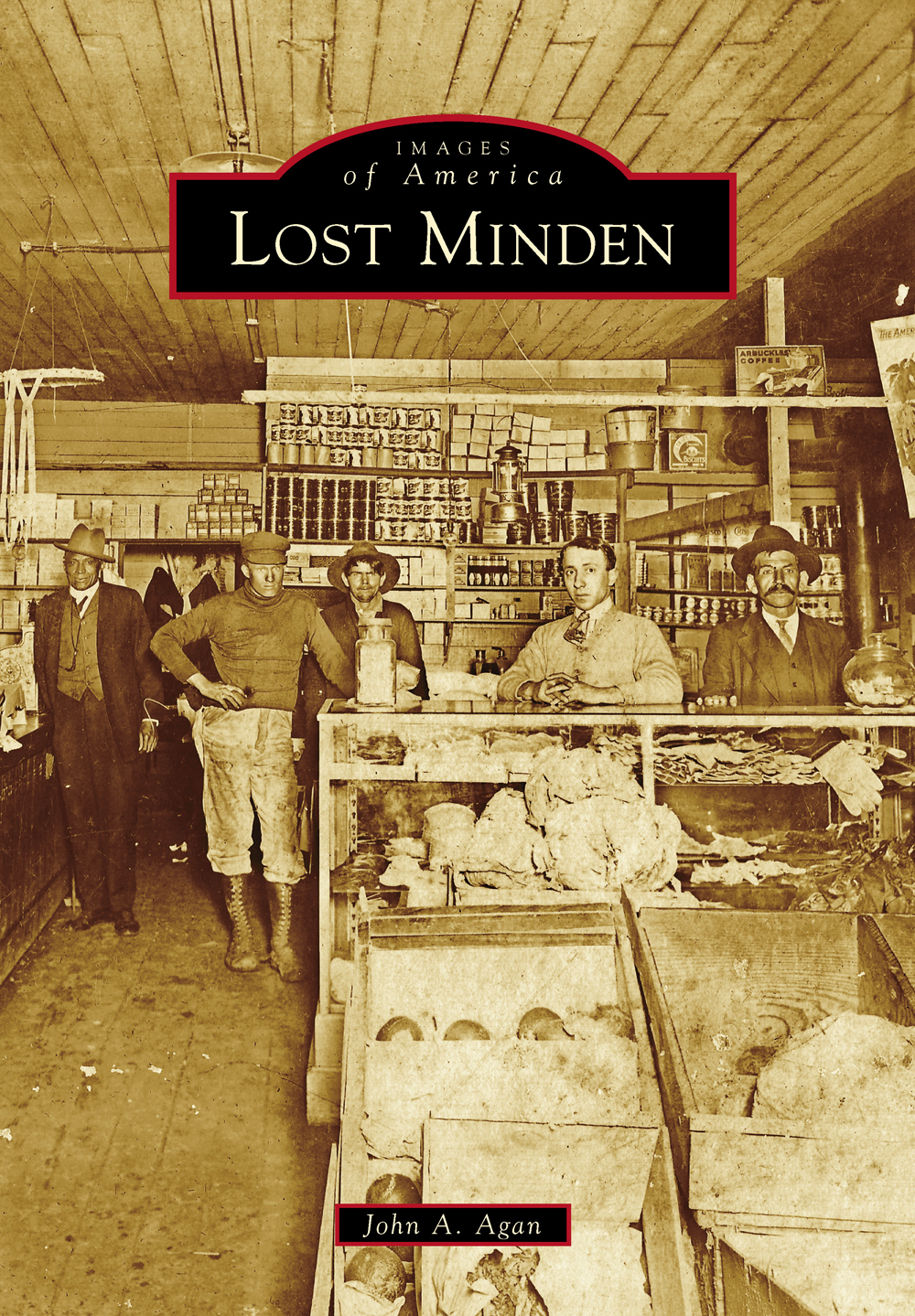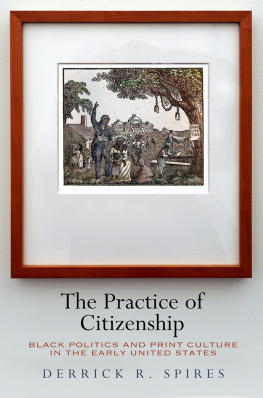Agan - Lost Minden
Here you can read online Agan - Lost Minden full text of the book (entire story) in english for free. Download pdf and epub, get meaning, cover and reviews about this ebook. City: Louisiana;Minden;Minden (La, year: 2015, publisher: Arcadia Publishing, genre: Religion. Description of the work, (preface) as well as reviews are available. Best literature library LitArk.com created for fans of good reading and offers a wide selection of genres:
Romance novel
Science fiction
Adventure
Detective
Science
History
Home and family
Prose
Art
Politics
Computer
Non-fiction
Religion
Business
Children
Humor
Choose a favorite category and find really read worthwhile books. Enjoy immersion in the world of imagination, feel the emotions of the characters or learn something new for yourself, make an fascinating discovery.

Lost Minden: summary, description and annotation
We offer to read an annotation, description, summary or preface (depends on what the author of the book "Lost Minden" wrote himself). If you haven't found the necessary information about the book — write in the comments, we will try to find it.
Lost Minden — read online for free the complete book (whole text) full work
Below is the text of the book, divided by pages. System saving the place of the last page read, allows you to conveniently read the book "Lost Minden" online for free, without having to search again every time where you left off. Put a bookmark, and you can go to the page where you finished reading at any time.
Font size:
Interval:
Bookmark:

IMAGES
of America
LOST MINDEN
ON THE COVER: Abraham Dow migrated to Minden from his home in Syria shortly after 1900. His store on what was commonly called Back Street served both the black and white communities for nearly seven decades. The store was torn down in 1970 as part of the construction of the Minden Civic Center and City Hall Complex. This image, taken in the early 1920s, shows Dow (center with no hat) and customers. (Authors collection.)
IMAGES
of America
LOST MINDEN
John A. Agan

Copyright 2014 by John A. Agan
ISBN 978-1-4671-1319-9
Ebook ISBN 9781439649251
Published by Arcadia Publishing
Charleston, South Carolina
Library of Congress Control Number: 2014942567
For all general information, please contact Arcadia Publishing:
Telephone 843-853-2070
Fax 843-853-0044
E-mail
For customer service and orders:
Toll-Free 1-888-313-2665
Visit us on the Internet at www.arcadiapublishing.com
To my parents, J.C. Agan Jr. and Juanita Murphy Agan, for their many years of support, encouragement, and love
CONTENTS
ACKNOWLEDGMENTS
I began researching local history as a high school student in the 1970s, and it has become both a vocation and an avocation for me. I would have not been able to pursue that passion and produce research and publications without the help of so many people. I want to acknowledge a few of them here. The first would be my maternal grandmother, Louannie Longino Murphy, and her daughter, my mother, Juanita Murphy Agan, who inspired me with a love of history as a small child and were my partners in this work so long as they were both alive. I thank my teachers, from the earliest years through my college training, who taught me so much about the value of history and how to preserve and protect our heritage. My gratitude goes to my employers, both at the Webster Parish Library and Bossier Parish Community College, who have allowed me the freedom to research and produce such projects as this book.
This work would not have been possible without the aid of the Dorcheat Historical Association Museum, its executive director, Schelley Francis, and its president, Thad Andress. Schelley and Thad have been my friends for years, but their support went a long way toward making this book a reality. Over the years, I have been given images by so many citizens of Minden that I hesitate to list names, fearing omission, but I want to thank the following folks who have been so helpful: Frank Griffith, Craig Farley, Clair Moore, the families of Grace Turner Watson and George Turner, the family of Lillian Life Willis, Joan Wiley Luck, and Meg McCowen. The collections of the Webster Parish Library and the Archives and Special Collections of Noel Memorial Library of Louisiana State University in Shreveport (LSUS) were vital to completing this work. Particularly, thanks go to library director Beverly Hammett at the Webster Parish Library and Shawn Bohannon at LSUS. I also was assisted by staff at the National Archives at Fort Worth, Texas, in obtaining some of the images used in this book. Finally, I am so very grateful to Julia Simpson, my acquisitions editor at Arcadia Publishing on this project, who tolerated my lack of technical skill and blurred deadlines to bring this book to fruition.
INTRODUCTION
Minden, Louisiana, was founded in 1835 by Charles Veeder, a German American entrepreneur. In the more than 180 years since that time, the town has experienced times of triumph and tragedy like most communities in our country. Each of these events in some way changed the landscape, personality, and character of the town. While progress has been fairly stable in Minden, progress always implies change. In those changes, things are invariably lost. The title of this book, Lost Minden, reflects those thingsboth physical structures and individualsthat have been lost during those years of growth but have also shaped the community and are still remembered today.
When the original plat for Minden was designed, it was in the form of a parallelogram, and the town developed with the two long sides of that shape becoming two parallel streets with a middle ground in between. Those two streets have borne different names over the years. Today, the northern street is Main Street, and the southern street is Broadway, but for most of our history, locals knew them as Front Street to the north and Back Street to the south. The middle ground between those two streets was broken into two large portions. The eastern portion was home to businesses, while the western section was originally common green space. After Minden became a parish seat with the creation of Webster Parish in 1871, the green space was converted to public use. Eventually, three different Webster Parish courthouses would be built in that green space, along with a large section where, at the start, horses and buggies were hitched. Beyond that lot, a large Civic Park was created in the early 20th century. Today, the hitching lot is a parking lot, and the third Webster Parish Courthouse sits on what was the park. Many memories of good times in the old park remain, of those who experienced it before it was replaced in the early 1950s.
The eastern end of the middle ground with the businesses is a unique aspect of Minden life, particularly during the years of Jim Crow. Under segregation, white residents almost exclusively shopped the stores on the north side of Front Street. While there were black businesses in the largely black sections of Minden, the stores on Back Street became the black business district. The stores in the middle ground with front doors on Front Street and back doors on Back Street accepted customers both white and black, each using the appropriate door. For a terrible period, any black person seen on Front Street without apparent justification risked arrest or, at the very least, harassment. From the 1890s to the 1960s, these two communities were a living embodiment of separate but equal with all that entailedthe mores of segregation extended into the economic life of the community. The images in largely focus on the business structures along the parallelogram, thus the title The Parallelogram and Beyond.
Minden has always been a city of churches and an active community, with its citizens being enthusiastic participants in civic events. In the early years, downtown was dotted with the churches of several denominations, and even today, at least five churches remain active in the downtown area. Beyond the spiritual implications of these congregations, the unique architecture of the churches left lasting memories. In terms of community cohesion, the populace embraces causes for the public good. For example, Minden gives more per capita to St. Judes Research Hospital than any community in the United States; its annual February telethon produces more than $1,000,000 in donations. The St. Judes project is only the most modern expression of the community spirit present in our town. A major part of this community spirit has been driven by religion. In fact, an editorial writer in 1901 stated that, in Minden, the shadows of a spire are athwart the hearthstones of each home. Community-sponsored athletics, entertainment, and celebrations were the norm in Minden and left indelible marks on the heritage of the town. So, the images that focus on that religious and community spirit give the title Shadows of Spires athwart the Hearthstones.
Although Minden was not formally incorporated until 1854, the community made its first foray into local government years earlier, and that attempt focused on a very specific role of government. In 1838, three years after Minden was founded, Mindenites attempted to stimulate public education in the town. Minden residents, led by Charles Veeder, persuaded the Louisiana legislature to grant the town $1,500 for the purpose of erecting a building for academic purposes. They created the Minden Academy, one of the first public schools in the state of Louisiana, and cemented the marriage between government and education that has always been prevalent in Minden. When a change in the Louisiana constitution forced the school to alter its policy of providing free tuition to needy students, a private male academy and female college emerged in 1850 to replace the original academy. In the first quarter of the 20th century, E.S. Richardson was hired as superintendent of Webster Parish Schools. Under his leadership, the school system was modernized and become a model copied across the nation. Within a period of 15 years, Minden, after having never built a public school since the 1830s, erected two modern brick facilities with public funding. Mindens founder had intended the town to be a parish seat, and while it was never achieved while he lived in Minden, the creation of Webster Parish in 1871 made Minden the seat of government for the parish. This status entailed the construction of government buildings over time. Because of this close relationship between education and its government sponsor, the chapter on education and government, , is titled Erecting a Building for Academic Purposes.
Next pageFont size:
Interval:
Bookmark:
Similar books «Lost Minden»
Look at similar books to Lost Minden. We have selected literature similar in name and meaning in the hope of providing readers with more options to find new, interesting, not yet read works.
Discussion, reviews of the book Lost Minden and just readers' own opinions. Leave your comments, write what you think about the work, its meaning or the main characters. Specify what exactly you liked and what you didn't like, and why you think so.





